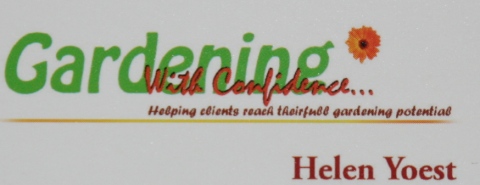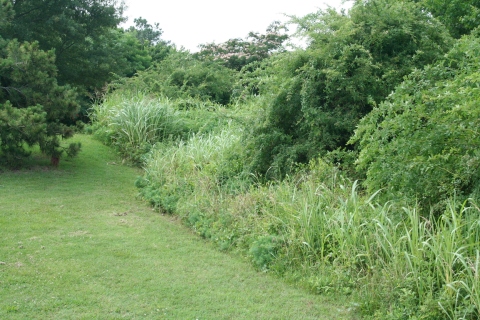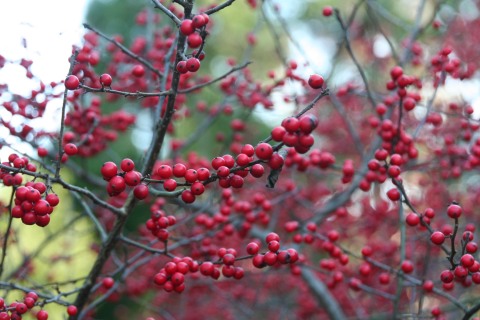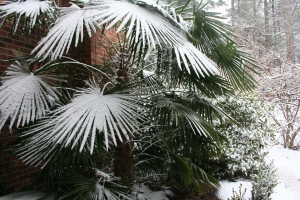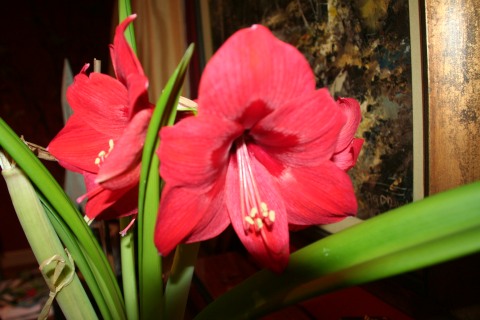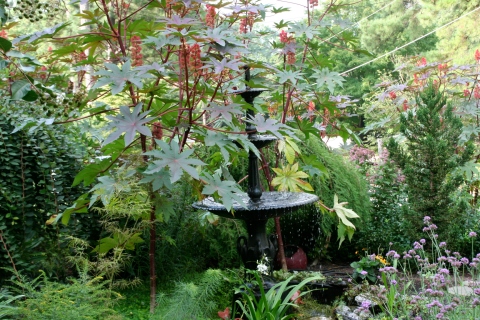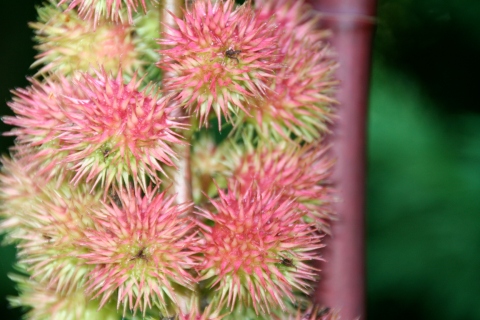 All I wanted to know was if it was favored by bunnies…
All I wanted to know was if it was favored by bunnies…
As a garden communicator, when I write about a plant, I like to present as much information as possible, at the same time making it readable. Also, most times, I’ve had a good experience with a particular plant, bringing me joy and I want to share this experience and hopefully encourage the reader to plant one in hopes they experience similar joy. I don’t like to write about a plant I don’t have a personal experience with.
What I want to know about a plant may be different than what you want to know. The variables per reader are vast. Most gardeners will want to know about the plant’s USDA hardiness, sun requirements, soil type and the like. There are those plagued with deer who want to know if it’s deer resistance, with nearly every communicator qualifying the answer with, “But as you know, deer will eat anything if hungry enough.”
I need to know the plants water needs. I have a waterwise garden design, so I need to know if the plant of my desire will go into my oasis, transitional, or xeric zone. From there, I can decide if I have room, or if I really want it, I’ll make room by trading up. I find it frustrating when I see a plant I want and have to go to several sources to get all the info about a plant I need.
When I’m gathering gardening info, I’ll gather even more information than I need personally, in the event I really like the plant and want to put it in a clients garden or if I want to write about it. For example, I am plagued with bunnies. I need to know if a plant is resistant to bunnies. I don’t have deer. However, I will want to know this information to file away for a client’s need or for a writing assignment.
The magazines (me included) are currently writing about the 2009 Perennial Plant of the Year, Hakonechloa macra ‘Aureola’ ornamental grass. A timely endeavor. I like it. It looks good in the photos and I want it. But with having made too many plant purchase mistakes to mention, and finding that zonal denial only benefits the nursery or garden center, I’m getting to where I need to be gaining more knowledge and killing less. If a plant is listed as a bunny favorite, I’ll stay clear of it. No use building a buffet line for those marauding, munching, members of the cute critter club.
Here is what I want to know about a plant. The list started out organized and ended up random as I continued to think of things I wanted to know:
Hardiness range. My garden, Helen’s Haven, is in Zone 7b. I have to really, really like it if is at the end of it’s zone. Preferable, I like to have another zone wrapped around it. I no longer buy zone 8 plants; those days will be here soon enough if you listen to the global warming conversations, but for now, I’m sticking to my zone.
Water requirement. I will accept most conditions, dry, moist or wet. I don’t have all the waterwise zones covered, but I do have most of them including, sunny oasis, sunny transition, sunny xeric, shady transitional, shady xeric and a tiny bit of shady oasis. I need a plant’s watering need so I know where to plant it.
Sun/shade requirements. Absolutely need to know. Boy oh boy, this simple concept can be so confusing. A footnote could accompany just about any plant going something like this – give afternoon shade in hot climates, or give extra water if planted in sun…you get the point.
Height. We all gotta know.
Width. Ditto.
Good for containers. Very useful for those with limited space and those of us who like to use containers throughout the home and garden.
Drainage requirements. For the most part, Helen’s Haven is well drained. This is by design. As I created my gardens, I amended the heavy clay with lots of organic matter. However, there are parts of my oasis zone that receive a lot of extra water either by my neighbors lawn sprinklers or from fountain splash. As such, these areas stay wet.
Soil structure. This usually goes hand-in-hand with drainage, but not entirely. There’s more to it when growing a living thing. Every gardener needs to know their soil structure. We are solid clay. The kind I imagine potters use to throw pots – I sure would like to throw it about. But, reality sets in and it does make good soil, if amended properly.
pH. Every plant has a pH preference. It is no coincidence here in the south that pines and azaleas are the most common combination. Not only do the azaleas benefit from the dappled shade provided by the pines, they also benefit from the acid soil the pines provide. The pH in Helen’s Haven tends to be acid; a common occurrence in the south, which is why our hydrangeas tend to be blue and if we want to change to the color to pink, we need to go through some hoops and amendments, too many for me, besides I like blue.
Does it reseed? This could be a good thing or a bad thing. I also need to know more than if it is listed as a reseeding annual. Poppies, Larkspar, Cleome, Monarda are all considered reseeding annuals. But the the success of each will depend of many factors, including mulching. I can mulch like crazy and my Cleome and Monarda are snug as a bug and perform beautifully. If I treat my Poppies and Larkspar with mulch, they will not survive.
Hoes it spreads and how fast? Is it Invasive? You have to look for code words to know.
- Reseeds freely
- Spreads by stolons
- Plenty to share with your gardening friends
- Oh, it’s easy to pull up if it gets out of hand
- It’s worth it
Evergreen, semi-evergreen or deciduous. This is most important in design. If I’m building a buffer hedge, I may well benefit from an evergreen hedge for year round privacy. Or I may like the lightness a deciduous hedge offers in the season I’m not in need of as much privacy.
Seasonal interest. It’s good to know when a plant is the showiest.
Deer resistance. More and more people need to know this. The deer population is growing at about the same rate land is being claimed for new developments. I don’t even want to consider how this gets balanced. But my clients want to know what they can grow that the deer won’t eat. I make suggestions and then of course I say, “But as you know, deer will eat anything if hungry enough.”
Bunny resistance. This is my biggy. I need to know. I don’t recall reading this as clarification on a plant tag. As such, I’m always doing extra research, usually with no success. My success comes if I find it is still standing the next day.
Origin. Some want to know if it’s native. Others not. I think in general it is good to know. Sort of like all of us. Our origins are conversation worthy.
Maintenance. High, low, moderate or maintenance free. All good to know.
propagation. Handy to know in the event you only want to pay for this plant once.
Pests. We need to know. We re more likely going to choose a variety of plant that isn’t prone to pests, than one that is.
As I lust over the 2009 Perennial Plant of the Year Hakonechloa macra ‘Aureola’ ornamental grass, I decide to consult the current literature and see how many source reviews I needed to do to get all the information needed necessary to decide if this beauty will go into my garden.
Hakonechloa macra ‘Aureola’
Golden Japanese forest grass
Hak-on-eh-KLO-ah MAK-rah
| Need to Know |
A |
B |
C |
D |
E |
F |
| USDA Hardiness zones |
5 – 9 |
5 – 9 |
|
6 – 9 |
5 – 6 need winter protection |
5 – 9 |
| Water requirement |
Medium Moist |
|
|
|
|
Moist |
| Sun/shade requirements |
Full sun to Partial shade |
Partial shade |
Sun or shade, woodland |
Full sun |
Partial to full shade is best.Full sun tends to scorch the leaves |
Partial shade in hot climes. More sun in cooler climes |
| Height |
1’ – 3’ |
1 – 1.5’ |
|
18” |
|
12 – 18” |
| Width |
1’ – 3’ |
|
|
24” |
|
18 – 24” |
| Good for containers |
|
|
Yes |
|
|
Yes |
| Drainage requirements |
|
Well-drained soil |
|
|
|
Well-drained soil |
| Soil Structure |
Humus-rich |
Average soil. Also says humus-rich |
|
Average |
Rich and loamy |
Humus rich |
| pH |
|
|
|
|
|
|
| Does it reseed? |
|
|
|
|
|
|
| How it spreads and how fast. Is it invasive? |
|
|
|
|
Spread by stolons, it is a slow grower |
By stolons, but slowly |
| Evergreen, semi-evergreen or deciduous. |
|
|
|
|
|
|
| Season Interest |
Summer, fall. |
Reddish tint in fall |
|
|
Shades of pink and red in the fall. |
All summer with shads of pink and red in the fall |
| Deer resistance |
|
|
|
|
|
Yes |
| Bunny resistance |
|
|
|
|
|
|
| Origin |
|
|
|
|
|
Honshu Island, Japan |
|
|
|
|
|
|
|
| Maintenance |
|
|
|
|
Can divide after many years. |
Little. Cut back in late winter or early spring.Slow grower so division after many years. |
| Propagation |
Divide in spring |
|
|
|
|
By division or plugs |
| Pest |
|
|
|
|
|
Few insect or disease problems |
The table above, represents 6 reputable reference I consulted to answer my questions about this plants performance. I have hidden their identify with letters. But, just to give you an idea, one was a nursery, one an e-magazine, one a botanic garden, two were gardening magazines, one a professional organization.
My, my this exercise thought me a lot. Did it you? I had other referenced I could have considered, but I had enough trouble importing this table as it was. But it didn’t matter, the sources I referred to all varied as you can see above.
Notice all the blank blocks? Me too. Who knew?
Sadly, I still do not know if this plant is favored by bunnies.
Helen Yoest is a garden writer and coach through her business Gardening with Confidence™
Follow Helen on Twitter @HelenYoest and her facebook friend’s page, Helen Yoest or Gardening With Confidence™ Face Book Fan Page.
Helen also serves on the board of advisors for the JC Raulston Arboretum
